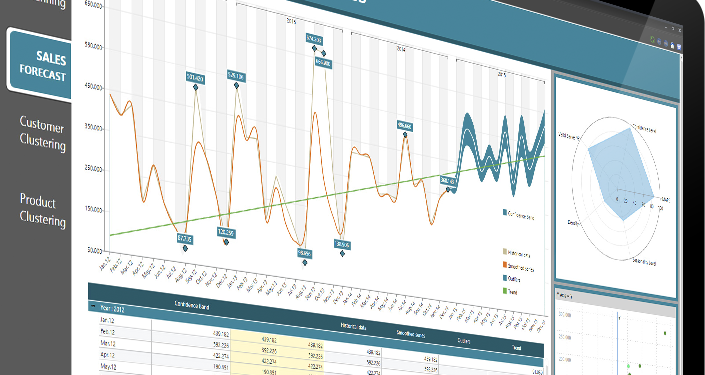Introduction
In the age of information, data is the currency of decision-making. Data analytics software has emerged as an indispensable tool for businesses and organizations seeking to thrive in a data-driven world. This comprehensive article explores the world of data analytics software, its significance, functionalities, and how it unlocks the potential hidden within vast datasets.
Understanding Data Analytics Software
Data analytics software is a class of applications and tools designed to process, analyze, and visualize data. It enables users to extract meaningful insights, patterns, and trends from large and complex datasets, empowering informed decision-making.
The Essence of Data-Driven Insights
Data analytics software is all about transforming raw data into actionable information. It goes beyond merely collecting and storing data, focusing on extracting knowledge that can inform strategies, optimize operations, and drive innovation.
Informed Decision-Making
Data analytics software equips decision-makers with the information they need to make informed, evidence-based choices. It reduces guesswork and enhances the precision of strategic planning.
Competitive Advantage
Organizations that harness the power of data analytics gain a competitive edge. They can identify market trends, customer preferences, and emerging opportunities, allowing for timely responses and strategic advantages.
Efficiency and Productivity
Data analytics software streamlines processes, automates tasks, and identifies bottlenecks or inefficiencies. This optimization enhances productivity and resource allocation.
The Core Methodologies of Data Analytics
Data Collection and Integration
Data analytics begins with collecting and integrating data from various sources, including databases, sensors, social media, etc.
Data Cleaning and Preparation
Raw data is often noisy and unstructured. Data analytics involves cleaning, formatting, and transforming data into a usable format, ensuring accuracy and consistency.
Data Modeling and Analysis
Data analytics employs mathematical and statistical models to analyze data, extracting patterns, correlations, and insights. Machine learning and artificial intelligence are often used for more complex analyses.
Data Visualization
Visualization tools within data analytics software create visual representations of data, such as charts, graphs, and dashboards, making insights more accessible and understandable.
Predictive Analytics
Predictive analytics uses historical data and statistical algorithms to forecast future trends and outcomes, enabling proactive decision-making.
Implementing Data Analytics Software
Define Objectives
Clearly define your analytics objectives and what you aim to achieve through data analysis. These objectives will guide software selection and implementation.
Data Integration
Ensure that your chosen data analytics software can effectively integrate with your existing data sources and systems to create a comprehensive data ecosystem.
Training and Expertise
Invest in training for your team or hire data analysts with the expertise to maximize the software’s capabilities.
The Benefits of Data Analytics
Informed Insights
Data analytics transforms data into actionable insights, enabling organizations to make well-informed decisions.
Improved Performance
Optimizing operations based on data analytics findings leads to enhanced efficiency, reduced costs, and improved overall performance.
Customer-Centricity
Understanding customer behavior and preferences through data analytics allows organizations to tailor products, services, and marketing efforts to meet customer needs.
The Advantages of Data Software
· Data Organization and Storage
One of the fundamental benefits of data software is its capacity to organize and store data efficiently. It allows organizations to centralize their data repositories, ensuring data integrity and accessibility.
· Real-time Insights
Data software empowers organizations with real-time insights. It enables them to monitor operations, customer behavior, and market trends as they happen, facilitating agile decision-making.
· Improved Decision-Making
Informed decision-making is a hallmark of data software. By providing access to accurate and relevant data, it helps organizations make decisions that are grounded in evidence rather than intuition.
· Enhanced Efficiency
Data software automates data processing tasks, reducing manual effort and human error. This automation enhances operational efficiency and frees up resources for more strategic endeavors.
· Scalability
As organizations grow, their data needs expand. Data software offers scalability, allowing businesses to accommodate increasing volumes of data without a hitch.
· Competitive Edge
Data software provides a competitive edge by enabling organizations to analyze market trends, customer behavior, and competitive landscapes comprehensively. This insight allows for timely adjustments and strategic advantages.
· Customer Insights
Organizations can gain profound insights into their customers’ preferences and behaviors by analysing customer data. This knowledge is invaluable for tailoring products, services, and marketing efforts.
· Predictive Analytics
Many data software solutions offer predictive analytics capabilities. This enables organizations to forecast trends, anticipate customer needs, and proactively address challenges.
· Cost Savings
Efficiency gains achieved through data software often translate into cost savings. Optimizing processes, reducing waste, and minimizing operational expenses contribute to improved profitability.
· Risk Management
Data software aids in identifying and mitigating risks. It can detect fraudulent activities, assess market risks, and support compliance efforts, reducing vulnerabilities.
Conclusion
Data analytics software has become the compass by which modern organizations navigate the vast sea of data. It empowers businesses to make informed decisions, optimize operations, and seize opportunities with precision. As data grows in volume and complexity, the role of data analytics software in shaping the future of industries, from healthcare to finance to marketing, cannot be overstated. In a world where data is king, organizations that harness the power of data analytics software are better equipped to succeed and thrive. It is not merely a tool but the key to unlocking the hidden potential within data and steering organizations toward a future of informed data-driven excellence.
References:




